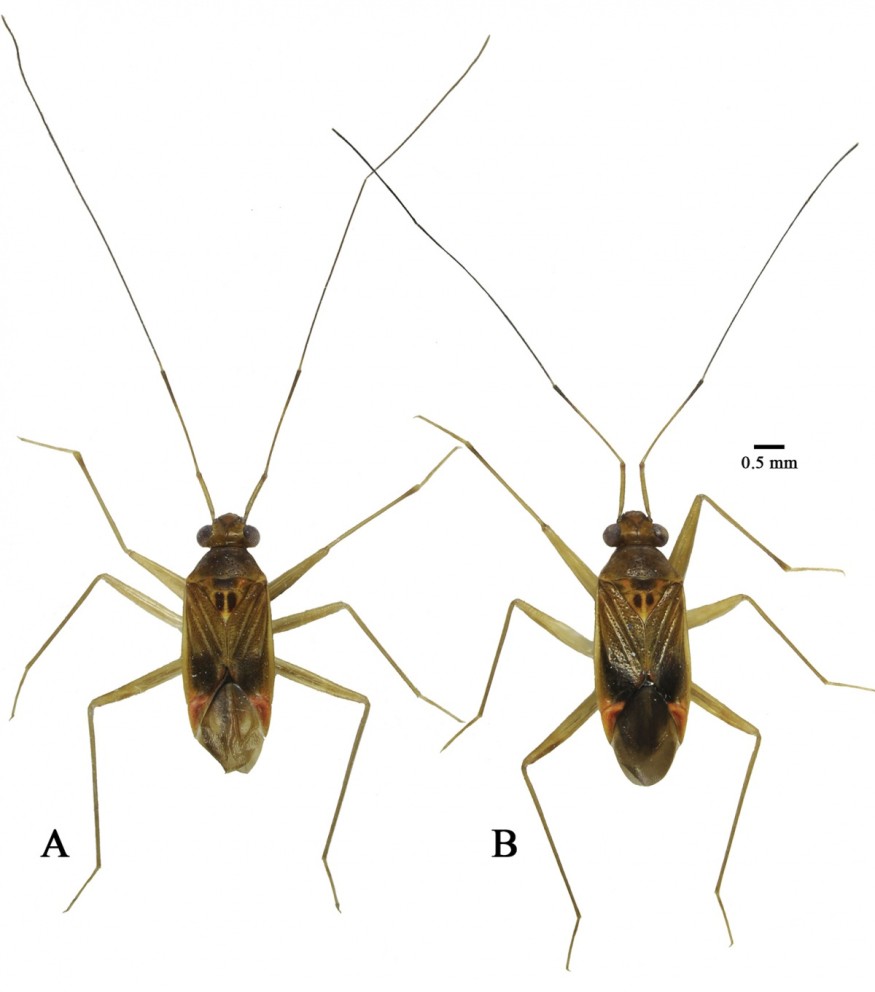A rare tropical species of Heteroptera equipped with long antennae was discovered by an international research team, including St Petersburg University scientists.
New Southeast Asian Species
The team discovered the bug, which was classified into a new genus. It came from Southeast Asia's Borneo island and was named Tatupa grafei, classifying it in the Miridae family of plant bugs. It has been named after Ulmar Grafe, a Brunei professor who supported the researchers.
The Heteroptera insect group is large, and not all its members are known to be true bugs. People commonly think of them as bloodsuckers, although most of them don't bite. According to St Petersburg University biology masters student and first study author Veronica Tyts, the Miridae family of plant bugs do not feed on our blood.

READ: Elephant Shrew Rediscovered in Africa After Being "Lost" for 50 Years
Their study has been published in the journal Zookeys.
Borneo or Kalimantan is the world's third-biggest island. Roughly 1% of it belongs to Brunei Darussalam, where the Ulu Temburong National Park can be found. The tropical forests here remain intact and contain fantastic biodiversity.
Jalan Universiti, Brunei researcher Claas Damken collected the insect specimens and sent them to second author Anna Namyatova to be identified.
According to Tyts, the Brunei sample is relatively large, with nine specimens in the new monotypic genus Tatupa and Tatupa grafei as the only species. The species is most probably endemic.
The newly discovered insect is spotted and golden, and the males are of the same size as the females. They have a body length of around five millimeters, not including their long antennae.
Tatupa Grafei Behavior
This insect is usually found on the fungi present on rotting wood, and researchers speculated that it could be part of the insect's diet. Alternatively, it may also eat the smaller insects feeding on the fungi. A further third alternative is that it is eating both the fungi and the tiny insects.
READ NEXT: Rediscovered: Florida's Blue Calamintha Bee Spotted at Lake Wale Ridge
Documenting the New Species
St Petersburg University's Department of Entomology took color photos of the new bug species using a stereo microscope with a camera mounted on it. Other images were produced from the scanning electron microscope at St. Petersburg University Research Park's resource centers, notably The Center for Microscopy & Microanalysis and The Center for Molecular & Cell Technologies.
Future Directions
The study authors are presently moving forward with the research on the new species. An extended study is expected to be written and published shortly, which deals with the rare Rhinocylapus-complex bugs' phylogeny. From this research, the insect group's phylogenetic tree is expected to be produced, which will show the possible evolutionary ancestors and relationships of this family of bugs.
The authors determined this by conducting an analysis of the insects' morphological characteristics and a DNA marker analysis.
Seven out of the nine insect specimens are to be returned to Brunei, their home range, while the remaining two will stay and be part of the collection of the Russian Academy of Sciences' Zoological Institute.
READ NEXT: New Green Pitviper from India Named by Scientists After a Character from Harry Potter
Check out more news and information on Insects on Nature World News.
© 2025 NatureWorldNews.com All rights reserved. Do not reproduce without permission.





